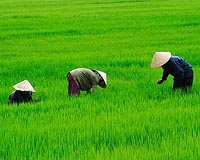 |
Calgary, Canada (SPX) Mar 08, 2011 A new paper by University of Calgary researchers, published in PLoS ONE, demonstrates the edge given to prey in the "space race" by human activity. The research was conducted by two University of Calgary students, a University of Calgary Post-Doctoral Fellow and two University of Calgary professors from the Faculty of Environmental Design, Department of Geomatics in the Schulich School of Engineering and the Faculty of Veterinary Medicine. The research looked at how predator-prey interactions and use of space were influenced by human activity. The team deployed 43 digital camera traps at randomly selected locations along roads and trails within a research area on the eastern slopes of the Rocky Mountains in southwest Alberta from April to November of 2008. Large predator animals in the study area consisted of wolves, black bears, grizzly bears and cougars. While the large herbivore species monitored were moose, elk, white-tailed deer, mule deer and cattle. They found that humans and prey species co-occurred together more often than humans and predators at camera sites, and that predators and prey were less likely to be in the same area if there was heavy human traffic. Their results showed that prey were three times more abundant on roads and trails used by more than 32 humans a day, but predators were less abundant on roads and trails used by more than 18 humans a day. "The research shows that humans might displace large mammalian predators," says Tyler Muhly, corresponding author of the paper and a PhD graduate from the Faculty of Environmental Design at the University of Calgary (currently with Alberta Innovates Technology Futures). "This provides a positive indirect effect on large mammalian prey species that are less sensitive to humans." The research suggests that limiting human use of roads and trails in wildlife areas to less than 18 people a day might reduce the effects on the large mammalian food web, but a growing human population means that the effects on wildlife food webs will likely increase.
Share This Article With Planet Earth
Related Links University of Calgary Farming Today - Suppliers and Technology
 Asia rice output threatened by pesticide overuse
Asia rice output threatened by pesticide overuseSingapore (AFP) March 6, 2011 The unbridled manufacture and use of pesticides in Asia is raising the spectre of "pest storms" devastating the region's rice farms and threatening food security, scientists have warned. Increased production of cheap pesticides in China and India, lax regulation and inadequate farmer education are destroying ecosystems around paddies, allowing pests to thrive and multiply, they said. The ... read more |
|
| The content herein, unless otherwise known to be public domain, are Copyright 1995-2010 - SpaceDaily. AFP and UPI Wire Stories are copyright Agence France-Presse and United Press International. ESA Portal Reports are copyright European Space Agency. All NASA sourced material is public domain. Additional copyrights may apply in whole or part to other bona fide parties. Advertising does not imply endorsement,agreement or approval of any opinions, statements or information provided by SpaceDaily on any Web page published or hosted by SpaceDaily. Privacy Statement |